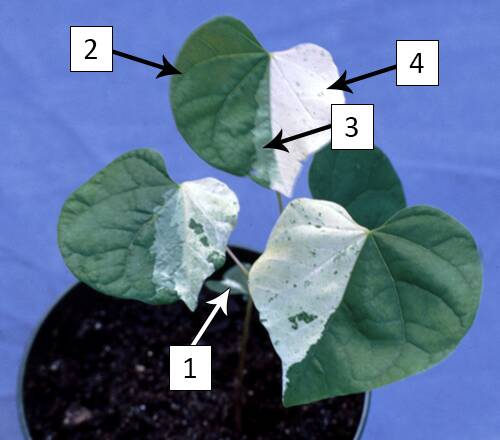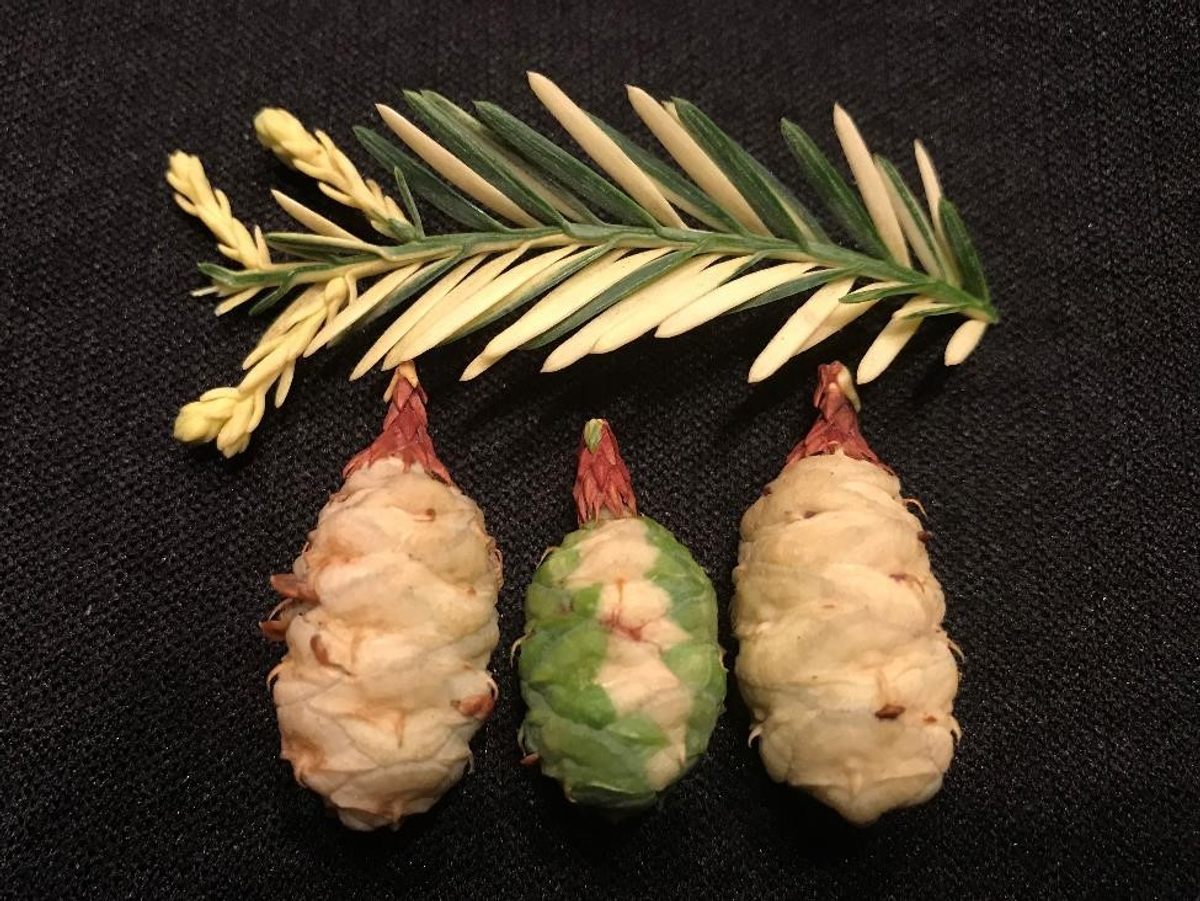Plant propagation
1/52
There's no tags or description
Looks like no tags are added yet.
Name | Mastery | Learn | Test | Matching | Spaced |
|---|
No study sessions yet.
53 Terms
What are 3 advantages to propagation?
Can select genes
Uniformity
Control of juvenile and mature phase
What are 3 disadvantages of propagation?
Monoculture
Slow & costly
Mutations can go unnoticed
Superior clones
Induced mutations from X-rays/gamma rays
Jumping genes
Mobile genetic factors that move from place to place on chromosome DNA
Turns genes on or off when present
Ortet
Original seedling tree
Ramet
Vegetative progeny
L1
Epidermal cells, small marginal islands: anticlinal
L2
Inner cortex layer: anticlinal
L3
Inner most roots & vascular (anticlinally & periclinally)

What type of chimera is this and define
Mericlinal: mutated tissue on only part of outer cell layer
Unstable
either becomes periclinal or reverts to non-mutated form or produces variable mericlinal shoots

What type of chimera is this & define
Periclinal: mutated tissue on outside layer of cells surrounding core of non-mutated tissue
Very stable

What type of chimera is this & define
Sectorial: mutated cells extend through all cell layers but only in one section
Reverts to periclinal/mericlinal or loses chimera
How long does a patent last?
20 years, exclusive rights to owner
How long does a trademark last?
10 years, can be renewed
Adventitious
Roots arising from any plant part other than those formed from normal development of seedling root meristems
What are the 4 stages of adventitious root formation?
Dedifferentiation
Formation of root initials
Root primordia develop
Root emergence
What is the difference between direct and indirect root formation?
Direct: roots don’t form on callus
Indirect: adventitious roots form on callus
What is the difference between primary and secondary meristems (leaf cuttings)
Primary: descended from embryonic cells, never ceased being meristematic
Secondary: dedifferentiation & creation of new meristems on base of leaf blade or petiole
4 Advantages of Cuttings
Cheap
Space efficient
Fast & simple
No special techniques required
4 Advantages of Pruning Stock Plants
Disease free
True to name
Juvenility maintained
Increases # of cuttings
Wood cuttings: Where to take from Hardwood & Softwood
Softwood: terminals
Hardwood; laterals
3 Goals of Intermittent Mist
Reduce air temp.
Reduce transpiration
Increase humidity
3 Advantages of Enclosed Mist System
High humidity
Uniform
Less water needed
2 Types of Nozzles: what are they & define
Deflection & anvil
Stream of water hitting flat surface
Coarse mist
Cheaper
Clogs less
Pressure jet
Less water
Clogs
Finer mist
Expensive
Goal of misting plants
Keep a thin layer of water on foliage
3 Reasons to use Seedling Rootstock
Readily available
Virus free
Better root systems
5 Reasons to Graft
Multiplying a clone
Novelty plants
Unique plant forms
Repairing injuries
Double working -using interstock
How do Grafts Form?
The scion & rootstock form a callus bridge that grows towards each other & form together then it forms the cambium & starts to divide new phloem & xylem
4 Tips for Successful Graft
Align cambium layers
Dormant scion, recently active rootstock
Prevent drying
Polarity
3 Causes for Incompatibilities
1. Adverse physiological response between scion & rootstock
Only fixable if non-translocatable
Virus or phytoplasma transmission
Anatomical abnormalities
4 External Signs of Unsuccessful Graft
Yellow foliage at end of growing season
Reduced growth
Premature death
Rootstock suckering
2 Reasons for Dwarfing
Anatomical features
Hormones- reduced conc. of auxin, higher rations of ABA
What is a Bud Graft?
1 bud and small section of bark
3. Reasons for Bud Grafting
Young plants or small branches
90-100% success
Propagating wood is scarce
3 Reasons Fall Budding is Better?
Higher temp promote extensive bud union formation
No storage needed- budsticks
Buds grow earlier following spring
Chip Budding (4)
Puzzle piece rootstock, scion cut to size
Unions stronger than T-bud
New growth vigorous
More uniform plants
4 Layering Advantages
Continual supply of water
Less maintenance
Propagation performed on site
Easy
2 Layering Disadvantages
Slow root development
Small number of plants produced
3 Tips for Layer Success
Girdling
Bending of stem
Add auxin
Simple Layer
Bend shoot to ground to create adventitious rooting then bend the bottom of U to stimulate rooting and pin down shoot
French Layering
Branch laid horizontally to ground, many shoots develop along length
Which layering method is used for fruit understocks and produces most plants?
Mound
In Vitro
In a culture vessel w/ a controlled environment & nutritive medium
3 Categories in Establishment: Microprop (Ex-)
Explant source
Explant disinfestation
Wash in soapy water w/ 10-20% bleach
Remove leaves from shoot
What hormones are added to culture medium?
At first only cytokinins then during rooting only auxins
Both during establishment
4 Steps of Microprop
Establishment
Multiplication
Rooting
Acclimatization
How to acclimatize microprop?
Greenhouse then outside
3 Differences of Microprop leaves
Reduced cuticular waxes
Thinner
Less functional stomata
2 Characteristics of Microprops
High vigor
Increased branching
5 Parts of Microprop Facility
Preparation area- kitchen where media is made & dispersed
Autoclave
Transfer area- area where explants are placed in culture & transfers/subcultures are done
Laminar flow hood
Growing area